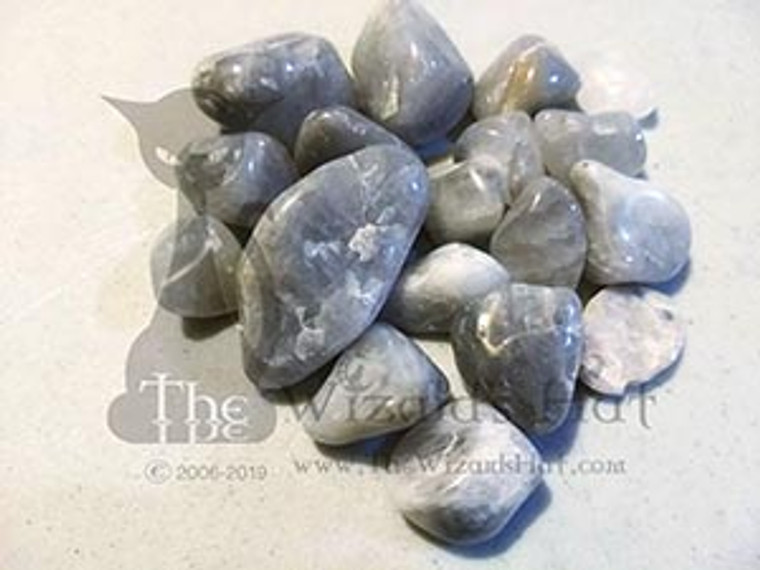
1 Cats eye stone/crystal - Tumbled
The Wizard's Hat1 natural tumbled Cats eye.
Cat's eye quartz
Cat's Eye Quartz History
Discovered in 1789 by renowned geologist Abraham Gottlob Werner, chrysoberyl is considered the original cat's eye gem, and is the only gem that can be traded as simply "cat's eye." All other varieties must be noted as cat's eye quartz or cat's eye apatite.
The Roman author, naturalist, natural philosopher and military commander of the early Roman Empire, Pliny, wrote nearly 2,000 years ago that quartz crystals formed from ice in dark clefts and caverns in the mountains. Cat's eye quartz has been used as gemstones and other religious objects for thousands of years and has always been thought to bring good fortune to the wearer. Cat's eye became popular at the end of the 19th century when it was given as an engagement token by the Duke of Connaught.
Cat's Eye Quartz Metaphysical Properties
Along with its striking appearance, cat's eye stone is also prized for its strong metaphysical powers and properties. Wearing cat's eye is believed to help ward off evil and acts as a talisman to protect against unforeseen danger. This stone is commonly known to bring wealth and prosperity and/or help people regain lost wealth.
Cat's eye quartz is also believed to help with disorders of the eye, recovery from post-traumatic conditions, healing cancer, increasing night vision, regulating blood sugar and promoting mobility. Cat's eye quartz is said to bring good judgement and provide deeper understanding. It is also believed to enhance intuition and to increase one's psychic abilities and powers of concentration.
Cat's Eye Quartz Geological Properties
Cat's eye quartz is a macrocrystalline variety of the mineral quartz, the most abundant single mineral on earth. The chatoyant or cat's eye effect visible in some quartz is usually due to the presence of asbestiform (fibrous) mineral inclusions or tube-like cavities in parallel orientation within the quartz.
The most famous and valuable cat's eye gemstone is chrysoberyl cat's eye. When the term cat's eye is used alone in the gem trade, it always refers to chrysoberyl cat's eye. All other types of cat's eye gems require an additional varietal designation, such as cat's eye quartz or cat's eye apatite. Chrysoberyl cat's eye is found in Sri Lanka, Brazil, India, China and Zimbabwe. Some other notable sources include India, Pakistan, Russia, Tanzania, Madagascar and the United States.
Cat's eye gemstones are distinguished by their special optical phenomena, known as chatoyancy, derived from the French saying for the eye of the cat ("oeil de chat"). This effect resembles the slit eye of a cat and is caused by the reflection of light by parallel fibers, needles or channels in the gemstone. Typically this gemstone should be cut into a sphere or oval shape, such as a cabochon, with the base parallel to the fibers for this effect to be fully displayed.
Description and information card included






